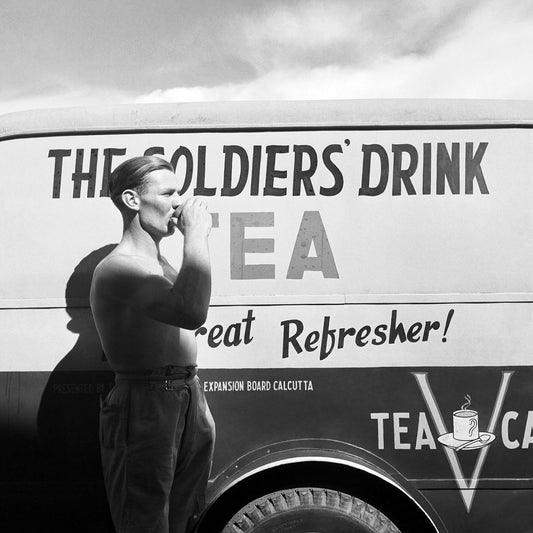-
Cecil Beaton by Curtis Moffat - circa 1925
Regular price From £18.00 GBPRegular priceUnit price / per£0.00 GBPSale price From £18.00 GBP -
Convoy Siesta by Cecil Beaton - 1942
Regular price From £34.00 GBPRegular priceUnit price / per£0.00 GBPSale price From £34.00 GBP -
Pipe Down for Make and Mend by Cecil Beaton - 1942
Regular price From £34.00 GBPRegular priceUnit price / per£0.00 GBPSale price From £34.00 GBP -
Servant of Viceroy's staff by Cecil Beaton - 1944
Regular price From £19.00 GBPRegular priceUnit price / per£0.00 GBPSale price From £19.00 GBP -
The Operating Room by Cecil Beaton - 1942
Regular price From £22.00 GBPRegular priceUnit price / per£0.00 GBPSale price From £22.00 GBP -
Commander Romer and Flight Lieutenant Hosegood by Cecil Beaton - WW2
Regular price From £34.00 GBPRegular priceUnit price / per£0.00 GBPSale price From £34.00 GBP -
An RAF Bomber Crew by Cecil Beaton - 1941
Regular price From £24.00 GBPRegular priceUnit price / per£0.00 GBPSale price From £24.00 GBP -
A Soldier in The Western Desert by Cecil Beaton - 1942
Regular price From £24.00 GBPRegular priceUnit price / per£0.00 GBPSale price From £24.00 GBP -
Cecil Beaton Self-Portrait - 1942
Regular price From £19.00 GBPRegular priceUnit price / per£0.00 GBPSale price From £19.00 GBP -
A Soldier Drinking Tea by By Cecil Beaton - 1944
Regular price From £14.00 GBPRegular priceUnit price / per£0.00 GBPSale price From £14.00 GBP -
Fawzieh, Queen of Iran by Cecil Beaton - 1942
Regular price From £19.00 GBPRegular priceUnit price / per£0.00 GBPSale price From £19.00 GBP -
Western Desert by Cecil Beaton - 1942
Regular price From £19.00 GBPRegular priceUnit price / per£0.00 GBPSale price From £19.00 GBP -
Royal Airforce Officer by Cecil Beaton - 1942
Regular price From £19.00 GBPRegular priceUnit price / per£0.00 GBPSale price From £19.00 GBP -
Ruins of the Great Synagogue by Cecil Beaton - 1941
Regular price From £29.00 GBPRegular priceUnit price / per














